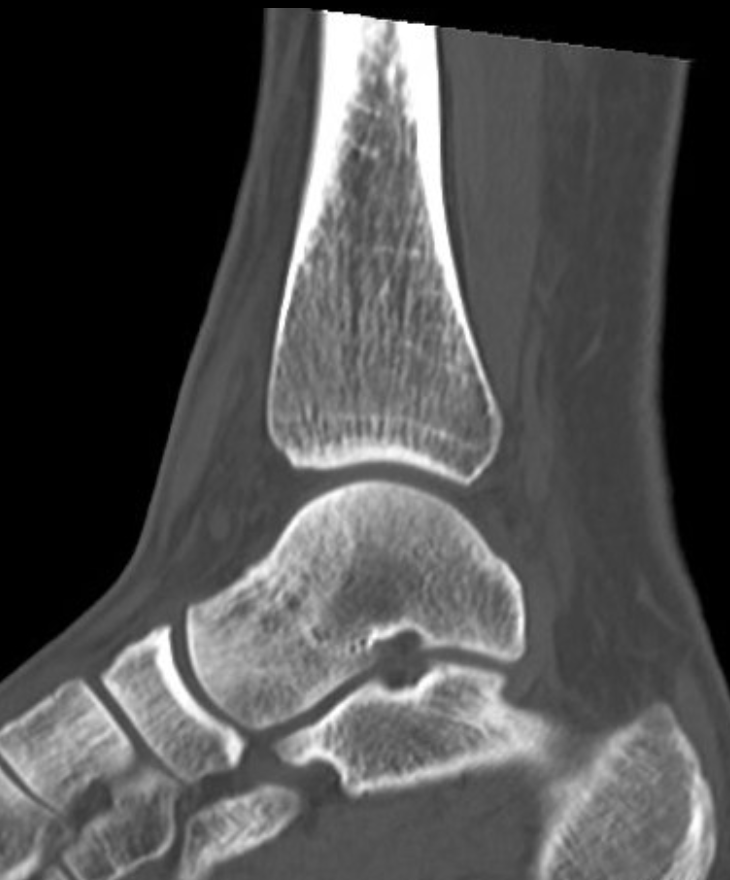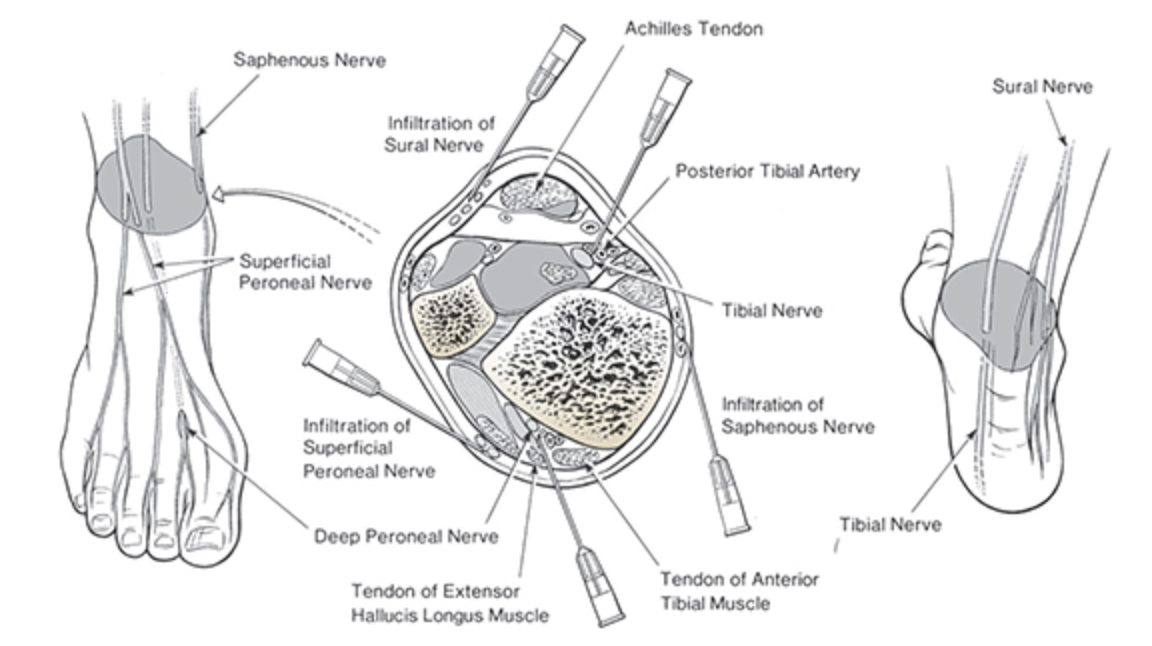Edited by Casey L. Wright and Matt Fury - 7/1/2021
Indications/Contraindications
Indications:
Closed reduction of ankle
Contraindications:
Cirrhosis
Hypersensitivity to local anesthetics
Child under the age of 3
Previously received maximum allowed dose of local anesthetic
Materials/positioning
Materials:
Lidocaine 2% without epinephrine (or can use lidocaine 1% from lac kits) (call ahead and have nurse leave this at bedside)
Alcohol pad
18-gauge needle
22-gauge needle
10cc syringe
Bandaid
2x2” gauze
Chlorhexidine prep
Positioning:
Usually supine in a stretcher.
Technique
Step 1: Confirm your neurovascular exam.
Step 2: set aside supplies including opened gauze, opened bandaid, and opened chlorhexidine prep. Use alcohol prep pad to clean the top of the lidocaine (after removing the lid).
Step 3: connect 18-gauge needle to 10cc syringe. Use the needle to pierce the top of the lidocaine and depress the plunger to inject air into the lidocaine. This will make it easier to draw up the lidocaine Note: If you inject 10cc of air into a lidocaine that is smaller than 20 cc, it will likely explode.
Step 4: After drawing up the lidocaine, exchange the 18-gauge needle for a 22-gauge needle.
Step 5: Palpate your landmarks and use the cap of the needle to mark where you are going to pierce the skin. You want to inject into the soft spot between the medial malleolus and the anterior tibialis tendon. Asking the patient to gently dorsiflex the ankle can help with palpation.
Note: When using the capped needle to mark the skin, it is helpful to angle it to get an idea of what angle you need to enter in order to slide between the dome of the talus and the tibia.
***The common error is matching the angle of the dorsum of the foot. When a patient is positioned on the stretcher, their ankle will naturally plantarflex. Therefore, be mindful that the tibial plafond is oriented perpendicular to the floor and this should be your angle.

Note: Alternatively you can inject through the anterolateral portal by identifying the interval between the peroneus tertius and extensor digitorum longus.
Step 6: Clean the skin with the chlorhexidine scrub.
Step 7: Using the 22-gauge needle, pierce the skin where you marked it. Angle the needle such that you will be able to slide over the talar dome and beneath the tibia.
Step 8: You may be able to feel the needle as it pierces the joint capsule. However, in trauma cases, this may be difficult. Once you feel that you are in the joint, pull back on the depressor to aspirate hematoma. If you aspirate dark red non-pulsatile blood, you are in the fracture hematoma and can inject the 10cc’s.
Step 9: Withdraw your needle, clean the injection site with your 2x2 gauze and cover with a bandaid.
Step 10: Confirm your neurovascular exam.
Step 11: Take care of other tasks (writing your note, responding to pages, setting up for your splint, etc.) while waiting for the lidocaine to kick in.
Above is a hematoma block. An actual ankle block for other foot procedures is directed at all 5 nerves as below:
Tibial: directly posterior to posterior tibial artery, midway between medial malleolus and calcaneus
Deep peroneal: immediately lateral to EHL and anterior tibial artery
Superficial peroneal and saphenous: medial and lateral field blocks (see image below)
Sural: along lateral border of Achilles, midway between calcaneus and lateral malleolus

Image borrowed from: Cousins MJ, Bridenbaugh PO, eds. Neural Blockade in Clinical Anesthesia and Management of Pain. 3rd ed. Philadelphia: Lippincott-Raven; 1998.
Pearls & Pitfalls
Potential complications:
LAST (Local Anesthetic Systemic Toxicity) or incomplete analgesia.
Tips for efficiency:
When you call back a consult, either ask them at that time to order the lidocaine or put in the order yourself while you are speaking with them.
Call the nurse immediately and have her get the lidocaine to the patient’s bedside. In the ED, if the nurses are unable to have the lidocaine at bedside in a timely manner, open one of the lac kits and take the lidocaine from there (usually 20cc of 1% without epi).
Once you have injected the lidocaine, move on to your next task (including writing your note) while you are waiting for it to kick in (can give ~10 minutes).